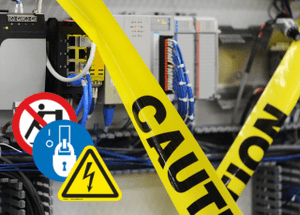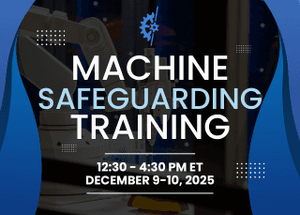2021 Workplace Safety Trends

What major safety trends are on the horizon in 2021 and beyond? The start of a new year is a fitting time to assess big picture issues and how they may affect your business and workplace. With that in mind, let’s take a look at the trends to watch in the coming months – both those with a focus on product and equipment safety as well as the outlook for overall workplace health and safety.
COVID-19 Landscape – and
Implications for Product Safety
As virus transmission surges, COVID-19will,
without a doubt, continue to keep workplace safety, and the
2020
trends
we saw related to worker safeguards, in the spotlight this year.
Another aspect to consider is the changes that the pandemic has brought to the way we do business and the repercussions for equipment manufacturers from a product safety perspective.“A common, more recent trend we’ve seen with product manufacturers, and expect to continue to see, is the need to reevaluate their supply chains to ensure they’re well-positioned to continue business despite hurdles with the current environment – everything from vendor shutdowns to issues with fulfilling orders,” says Angela Lambert, Clarion Safety’s head of standards compliance.
Big picture changes related to supply chains, vendors and production can, in turn, bring shifts to the safety strategy for a product, including warnings and instructions. That can range from evaluating the quality and on-time delivery of new vendors, or on a wider level, the actual warnings and instructions used, based on shifts to the product’s audience. For example, when it comes to label standards and formats, product manufacturers have several main choices to be aware of, contingent on whether the product is shipped and used within the U.S. or internationally – and whether they choose to focus on the ANSI or ISO standards. As our world and businesses continue to evolve in light of the pandemic, thoughtful decisions need to be made concerning how to warn effectively.
Embracing Technology:
Artificial Intelligence, Automation and IoT
According to a recent Gallup poll, 85 percent of Americans use devices that
have artificial intelligence (AI) elements built into them, whether at home or
at their workplace. Industries insiders expect that uptick in AI to continue
into 2021 and beyond, driven not just by the more obvious reasons, such as
improving operational efficiencies and cost reduction, but also gains in safety
related to the pandemic.
The use of Internet of Things (IoT) devices and products in the workplace can help increase safety, and wearable IoT devices can help detect when conditions are dangerous for workers. Employers are working to reduce the spread of COVID-19 by incorporating connected worker solutions, like wristbands and badges. These advanced solutions are designed to enhance contact tracing by alerting workers when they are too close. Additionally, these wearables allow workers to self-report infection and offer ways to alert others of potential exposure.
IoT allows a wide range of appliances and devices to transmit data, giving managers unique insight into how those devices, like elevators and heavy machinery, are operating in the workplace. Machinery companies have started integrating technology into their products, allowing them to report helpful information about maintenance and settings. This technology has incredible potential to reduce worker injury and keep facilities cleaner and more functional than ever.
In a similar respect, the use of automation in the workplace can help protect workers from injury. Drones, for example, can provide an overhead assessment of an area, which allows for a unique view of potential risks that would be difficult to spot from the ground. Drones can also speed up workplace inspections, saving time and money, allowing facilities to conduct them more often.
For equipment manufacturers, keeping pace with advances in automation and digitization is key, as changes in these areas can have a direct impact on safety perspective. Consider that automation can bring about changes to the equipment itself, the way it’s being manufactured and the way that end users access information. One example is safety manuals and how a company’s strategy for presenting safety information may need to shift in line with physical, print pieces being phased out due to the rise of digital information sharing.
Advances in PPE
Safety in construction has improved in recent years, and injuries have declined
noticeably. However, the industry still has the highest rate of fatalities.
According to OSHA, falls, electrocutions, being caught between items and being
struck by objects are the ‘Fatal Four’, or the main causes of construction
fatalities. Safety trends can help workers avoid injury and even death.
PPE is evolving to help address these risks. For example, smart vests can connect to WiFi and collect valuable information about the person wearing them. These vests can send data alerting a manager that a worker has fallen, or even sense when the person wearing the vest has become tired, based on their movements. Other wearables can tie into IoT systems, identifying dangerously high temperatures and other potential safety issues. IoT sensors may also go on equipment. These sensors can connect to computer vision systems, which process information and can take action to stop or shut off equipment if an injury seems imminent.
The use of “smart” PPE in the workplace is on the rise and is expected to contribute to a significant reduction in workplace accidents. Much like wearables, with smart PPE employers can collect data like number of steps walked and calories burned but also data pertaining to vital signs, helping managers determine when breaks are needed, aiding in accident reduction.
Proactively Addressing
Worker Wellness
Beyond the safety mainstays like training, PPE, and
on-product safety labels
and workplace safety signs, programs and guidelines on worker health have
expanded to include an emphasis on overall wellness. Organizations like the
National Institute for Occupational Safety and Health encourage employers to
talk to employees about health beyond prevention, including emotional and
environmental support. This may also include more long-term health issues other
than workplace injury, such as cancer or musculoskeletal issues. Other
workplaces may begin to include resources on substance abuse, in an effort to
address rising drug use in the United States.
Some workplaces offer options like exoskeletons to address the risk of musculoskeletal disease. Exoskeletons are increasing in popularity, offering physical support to those in physically strenuous jobs. They offer help with back support, holding tools and even help workers hold crouched positions for longer periods of time by providing a chair-like option.
In light of COVID-19, communication about employee
wellness and mental health has assumed an even greater role in the
workplace. More employers are formally acknowledging the impact of COVID-19 on
workers by incorporating wellness programs that address mental health. And, as
companies continue to open their doors amid the pandemic, employers are taking
greater steps to ensure a safe return to the workplace.
It’s certain that you’ll continue to be presented with new safety-related
challenges and opportunities in 2021 and beyond – whether it’s related to
equipment you manufacture or to the overall health and safety of your
workforce. At Clarion Safety, we strive to keep up with your changing needs. This
past year, that included added two new complementary offerings to our product
safety portfolio: a digital product safety/management solution called
ClarionAccess® and product safety and
risk consulting services for OEMs and EH&S professionals. Our
team is
here to help
answer questions on these services, as well as the rest of our safety solutions.
This blog was originally posted on 1/3/2020 and has been updated with new information throughout.



